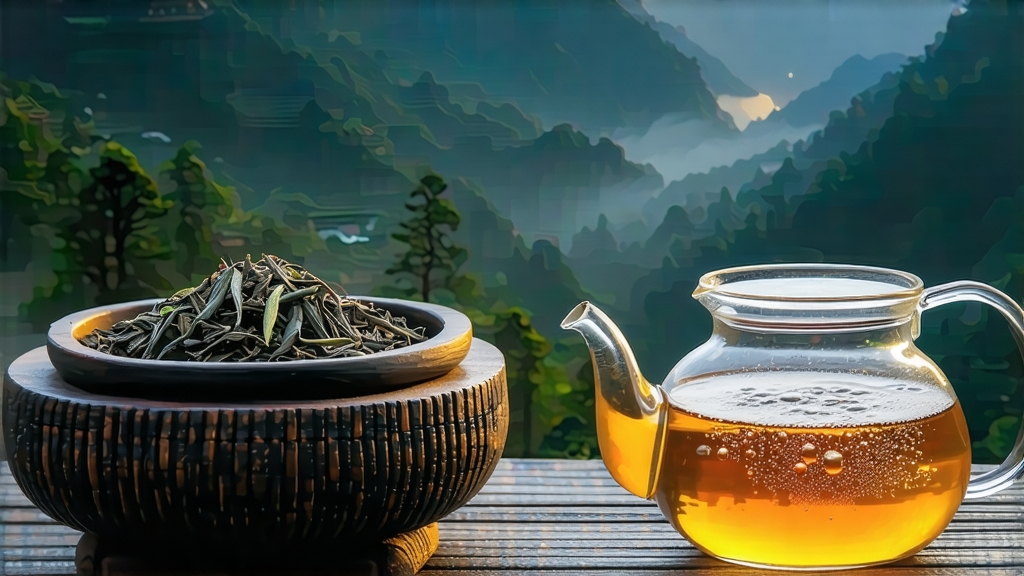
Lapsang Souchong—often written in the West simply as “Lapsang”—is the tea that started the global love affair with black tea. First crafted in the mid-seventeenth century among the granite cliffs of the Wuyi massif in China’s north-west Fujian province, it is universally recognized as the earliest black tea ever produced. Before its appearance, Chinese artisans had spent a millennium perfecting green, yellow, white, and oolong styles, but no one had yet allowed the leaf to oxidize fully and then dry it over smouldering pine. That bold experiment, born partly of accident and partly of military urgency, created an entirely new aroma category—smoked black tea—and launched the trade routes that would eventually carry tea to every continent.
Historical records kept by the Tongmu Guan checkpoint, a Ming-era border post tucked inside the Wuyi Nature Reserve, describe the first batch being made in 1646. Qing soldiers were passing through the village of Xingcun, and local tea makers, fearing the troops would confiscate their freshly picked leaves, hastily dried them over available pine firewood so they could be packed and moved. The resulting tea, dark, crisp, and imbued with a penetrating resinous perfume, was an instant success with Dutch merchants in Xiamen port. They christened it “Lapsang”—a romanization of the Min-dialect phrase la (pine) sang (wood)—and “Souchong,” referring to the fourth and fifth leaves traditionally used, larger and tougher than the buds prized for green tea. Within decades, Lapsang Souchong eclipsed the green teas that had once dominated European cargo manifests, and by the late 1600s it was selling in London coffeehouses for prices that rivalled silver.
Today, the name is legally protected under China’s National Geographic Indication system: only leaf grown inside the 565 km² core zone of the Wuyi National Nature Reserve may be sold as authentic Lapsang Souchong. Even within that boundary, two distinct styles have emerged. The traditional, smoke-dried version, called yan xiao zhong (smoked little variety), is still produced in the high-elevation village of Tongmu Guan. A newer, unsmoked expression, known as zheng shan xiao zhong (original mountain little variety), is dried with ambient hot air and celebrates the natural honey, longan, and mineral notes of the indigenous vegetable group cultivar. Both share the same plucking standard—one bud, two or three leaves, harvested in late April after the azaleas bloom—but diverge dramatically in their finishing steps.
Craftsmanship begins the moment the leaf is carried down the misty slopes in wicker baskets lined with fresh fern fronds to keep it cool. Once in the village workshop, the leaves are withered across second-floor bamboo racks suspended over crackling hearths of local Masson pine. The smoke is not an afterthought; it is the kiln’s fuel source, and its aromatic molecules bind to the leaf’s surface lipids during the eight-hour withering phase. Artisans control the intensity by adjusting the ratio of pine heartwood to resin-rich roots, aiming for a steady stream of cool, bluish smoke that never exceeds 35 °C. When the leaf has lost 65 % of its moisture and turned velvety to the touch, it is rolled for 45 minutes on antique cast-iron tables whose surfaces have been seasoned by decades of sap. Rolling ruptures cell walls, initiating oxidation that darkens the leaf from jade green to mahogany. The oxidization is then halted—traditionally by spreading the leaf in towering brass cylinders set over dying embers—locking in the signature campfire sweetness. Finally, the tea is given a second, gentler smoke for thirty minutes, rested for forty-eight hours, and re-fired to reduce moisture to 3 %. The entire process consumes three days and requires a wood allotment of two kilograms of pine for every kilogram of finished tea, a ratio unchanged since the Qing dynasty.
The unsmoked zheng shan xiao zhong follows the same initial steps but omits the pine-fuel phases. Instead, withering is done with warm air ducted from a remote wood-fired oven, and the leaf is baked in small batches in bamboo-lined charcoal ovens at 80 °C. The result is a tea that steeps to a brilliant amber liquor with aromas of dried longan, raw cacao, and the unmistakable Wuyi “yan yun” (rock rhyme